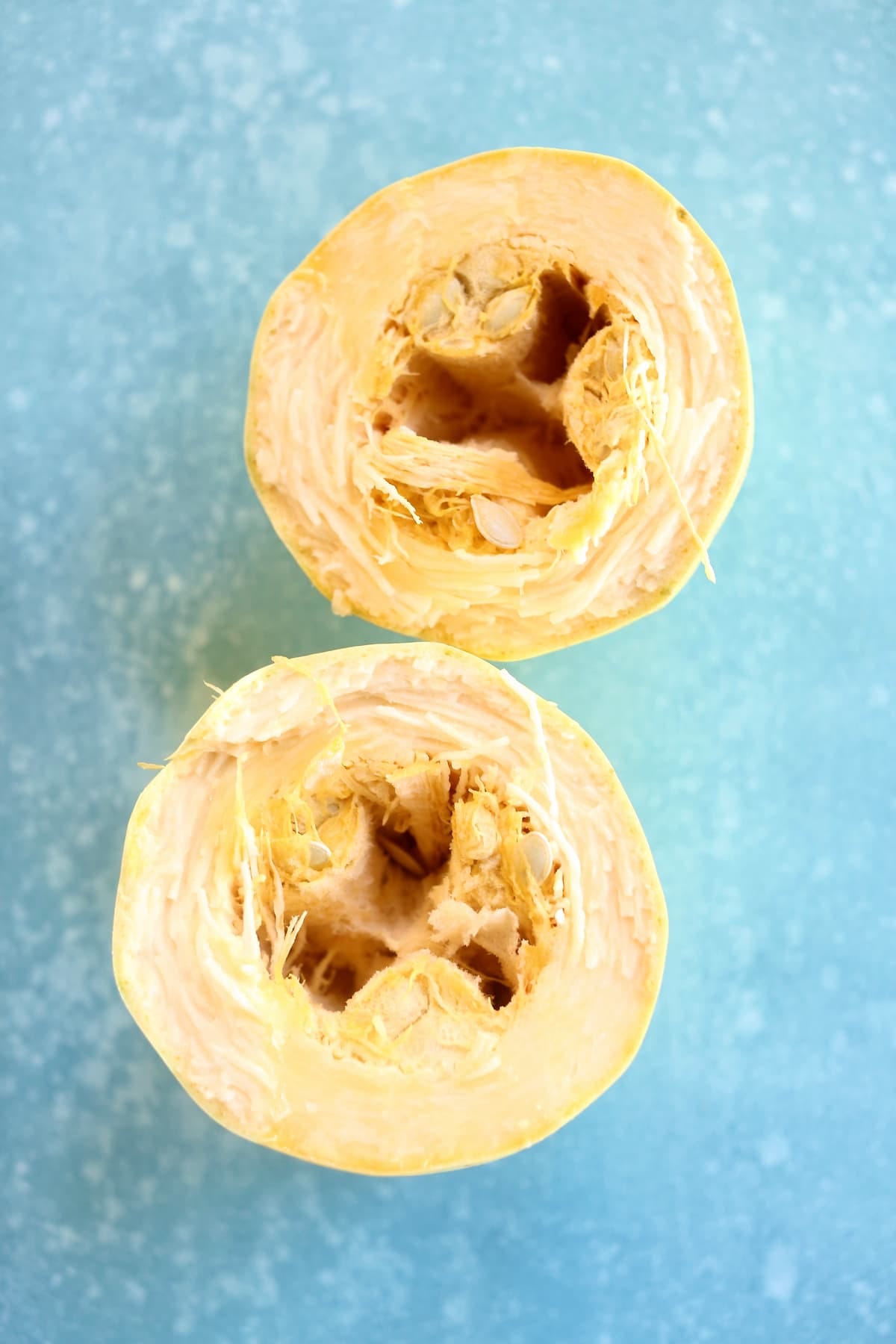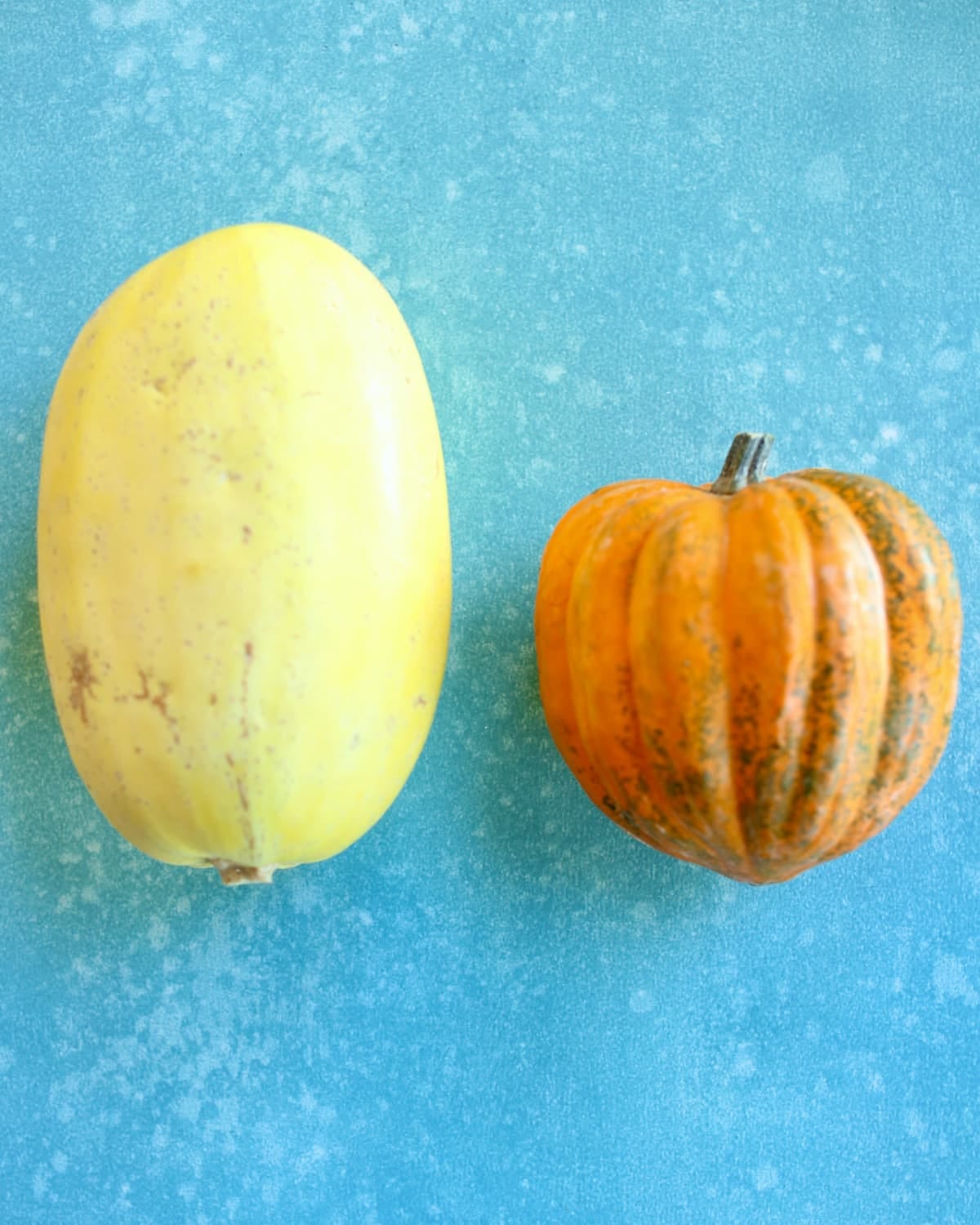How to Tell If Squash is Bad: A Simple Guide
Wondering if that squash you bought at the store is still good? Here's a guide to help you identify signs of spoilage for both winter and summer squash.
Ever brought a whole butternut squash home from the grocery store only to have it sit on the counter for weeks? (This would be me.)
If you're wondering if that squash is still edible, I've got you covered with this simple guide about how to tell if squash is bad:
What to look for when checking for freshness.
Tips and cues for appearance, texture and smell.
Knowing how to identify the signs of spoilage is helpful before you get started with cooking any type of squash. Here's some simple tips:
Appearance: Check for visual signs of rotting, like soft spots or moldy skin. The exterior of a squash past its prime will be wrinkled, shriveled, leathery.
Smell: Any unpleasant odor coming from the squash? Time to toss it.
Skin: When you press on the skin, does it feel soft and spongy? This is a sign it's bad! A fresh squash should feel solid and firm.
Stem: Inspect the stem if it's still attached, and check to see that it's not dried up, brown or moldy. These are all bad signs that it's time to throw the squash away.
Discoloration: If you see dark spots, puckering, or odd color, this is a sign the squash will have a bitter taste and is starting to go bad.
Do a quick check to test your squash for freshness. Here's how:
Is the outer skin firm and smooth, without any blemishes, cuts, wrinkles and discoloration?
Does the squash feel firm everywhere, and heavy for its size? If it feels light, spongy or mushy, it's past its prime.
Is the stem firmly intact, slightly green and attached to the vegetable? If it's looking brown or is about to fall off, it's no longer fresh.
When you smell the squash, does it have an unpleasant odor? These are signs it's likely gone bad and shouldn't be eaten.
If your squash passes these four steps, you're good to go!
My best tips for identifying spoilage in squash are:
Visible signs of mold or brown spots.
Black, moldy or discolored spots.
Soft spots that are mushy when pressed, and dry, cracked spots on the skin.
Foul odor. Unpleasant smell is a key sign that the squash is not edible.
Squishy texture. When you cut the squash open and the flesh inside is spongy, soft, or slimy with rotten spots, it's a clear sign it's spoiled and should be tossed.
Knowing if your summer squash is still fresh is very similar with winter squash, but note that summer squash tends to turn bad much quicker.
For best flavor, check for these signs of spoilage:
Visible mold and fungus.
Mushy, soft spots on a whole squash, that when cut are spongy and soft.
Discolored, dull or puckered skin.
Rotten smell = rotten squash.
Outer layer of wrinkled, shriveled skin.
To keep you squash the freshest - with a bright green color and plenty of firmness until ready to eat, use these storage tips:
Store in a cool, dark place with good ventilation. Avoid direct sunlight.
Keep your squash separate from fruits like bananas and apples, which give off ethylene gas and can cause them to ripen (and spoil) faster.
Like most fresh vegetables, it's a good idea to wash your squash only when ready to use. Any moisture will cause it to spoil faster.
Summer squash (like fresh zucchini, yellow squash and patty pan) should be used within a few days of purchase as they have a much shorter shelf life.
Winter squash generally last a long time - for few weeks at least - if purchased at the peak of ripeness.
Serving Ideas
Both winter and summer squash are easy, versatile and taste great!
For summer squash, try these ideas:
Grilled: As a healthy side dish. Just brush with olive oil, salt and pepper and place on the grill for a few minutes each side.
Stir-Fried: Almost any stir-fry will benefit from adding squash along with sliced onions, bell peppers, a flavorful sauce plus some chicken, steak, shrimp or tofu.
Baked: Stuff with ground meat and cheese and bake.
Raw: Grate thin slices to use in salads and omelettes.
Spiralized: Use an inexpensive spiralizer tool to turn the squash into "noodles" that are wonderful with any pasta sauce.
In winter months, try acorn squash and other winter varieties with these recipe ideas:
Roasted: A favorite way to eat winter squash! Cut in chunks or wedges, toss with olive oil and seasonings, roast until tender.
Add to Soups and Stews: Add cubed squash to chili, meaty stews and vegetable soups for bulk and lots of flavor.
Baked: Baked plain or with cheese, chili or sauteed vegetables on top is a great side dish idea.
Mashed: Boil and mash just like potatoes. Add cream, broth and seasonings to finish.
##







